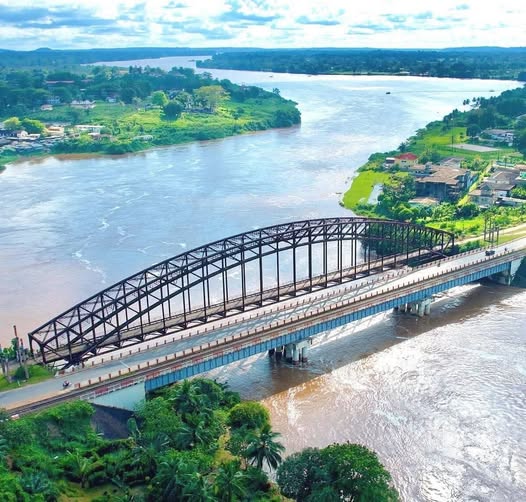Sanaga-Maritime: Edea at the crossroads of industrial promise and social divisions
Located at the heart of a strategic axis between Douala and Yaoundé, the city of Édéa embodies Cameroon’s hopes for industrial development, but faces significant challenges in terms of social inclusion, infrastructure, and governance. Located 60 kilometers from Douala, Édéa, the capital of the Sanaga-Maritime department, stands out as a historic industrial hub in Cameroon. With a major hydroelectric power plant on the Sanaga River, an aluminum factory operated by Alucam, developing port infrastructure, and a strategic rail network, the city has considerable economic potential. However, on the ground, promises of development are hampered by structural inequalities and fragile local governance. A territory rich in assets… poorly exploited The department is crossed by crucial logistics corridors linking the country’s economic and political capitals. It also has significant biodiversity, under-exploited agricultural potential (rubber, oil palm, cassava, cocoa), and a little-known natural and historical tourist heritage. The presence of heavy industry and large agro-industrial companies such as SOCAPALM and Hevecam should logically boost the local economy. But the reality is more mixed: youth unemployment, low downstream industrialization, environmental pollution, and poorly regulated land expropriations. “Development only benefits a minority, and local populations struggle to see any concrete benefits,” explains a local civil society leader, speaking on condition of anonymity. Infrastructure deficit and uncontrolled urbanization The city of Édéa suffers from a chronic deficit in basic infrastructure: secondary roads in poor condition, limited access to drinking water in rural areas, overburdened health services, and inadequate school facilities. Urbanization is progressing without a clear master plan, posing risks in terms of security, the environment, and social cohesion. Rapid population growth, coupled with uncontrolled rural exodus, is exacerbating land tensions. Many young people, without jobs or adequate training, find themselves marginalized, fueling frustrations that could lead to social instability. Geopolitical and economic sovereignty issues Strategically, Sanaga-Maritime plays a pivotal role in the national energy strategy. The Sanaga River feeds several major dams, and additional hydroelectric projects are under consideration. “Whoever controls energy controls development,” observes a Cameroonian economic intelligence analyst. However, dependence on foreign multinationals for the exploitation of critical resources (bauxite, aluminum, agro-industries) raises questions about local economic sovereignty. The local industrial fabric remains embryonic, due to a lack of policies to encourage local processing or the upgrading of value chains. What are the prospects? For Sanaga-Maritime to become a real driver of inclusive development, several levers are needed: • A clear land-use plan that integrates economic, social, and ecological dimensions; • Transparent dialogue between industry, public authorities, and local communities, particularly on land issues; • Increased investment in vocational training, local agribusiness, and the circular economy; • Stronger local governance, capable of planning and monitoring the impact of investments. In Édéa, development is underway, but it is progressing along a fine line. Between major industrial opportunities and persistent inequalities, the department’s future will depend on its ability to reconcile economic modernization, social inclusion, and responsible resource management. Sanaga-Maritime holds the cards—it remains to be seen whether the players involved will be able to play a winning hand for the population. Noël Ndong
Sanaga-Maritime: Edea at the crossroads of industrial promise and social divisions Read More »



